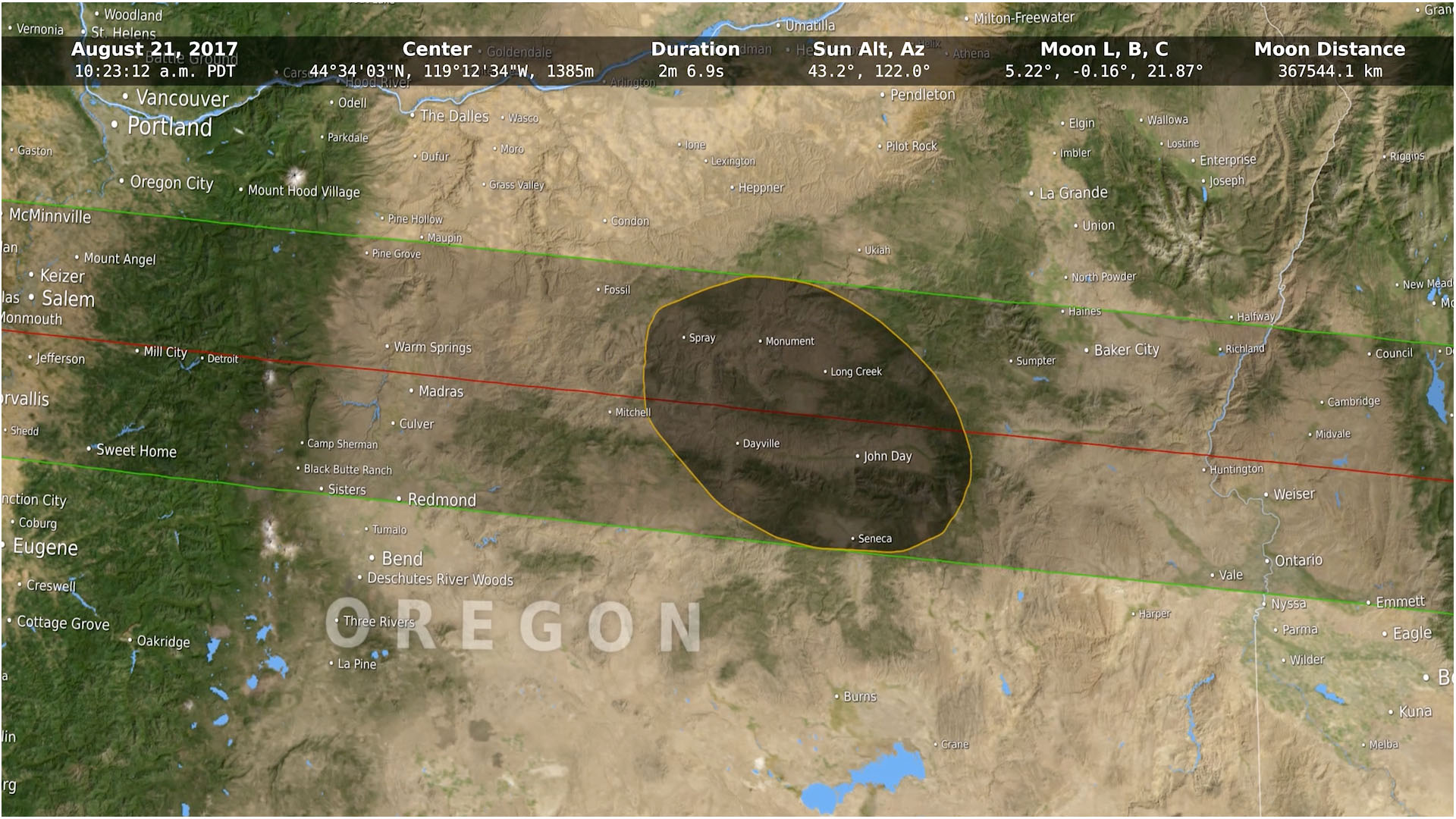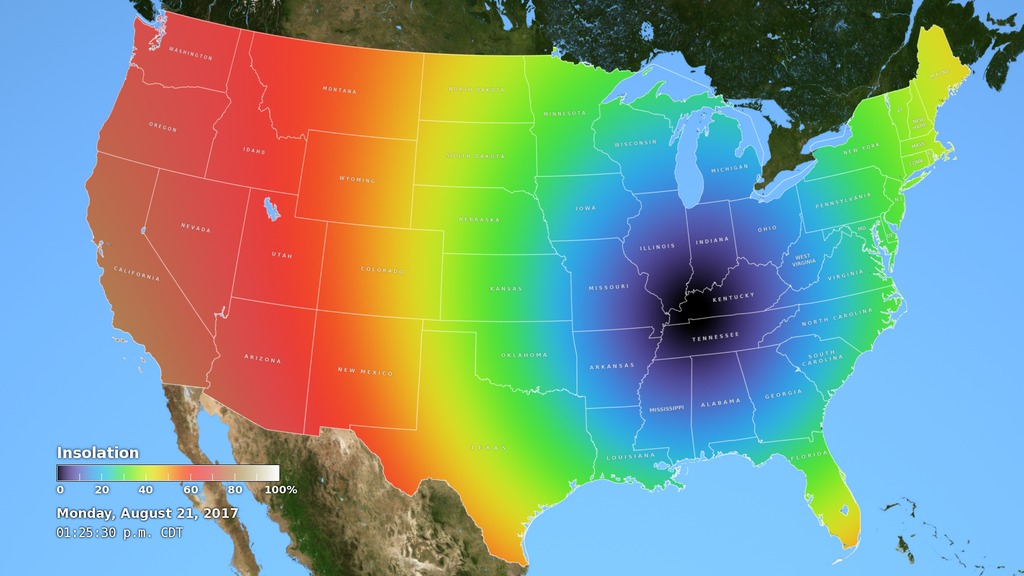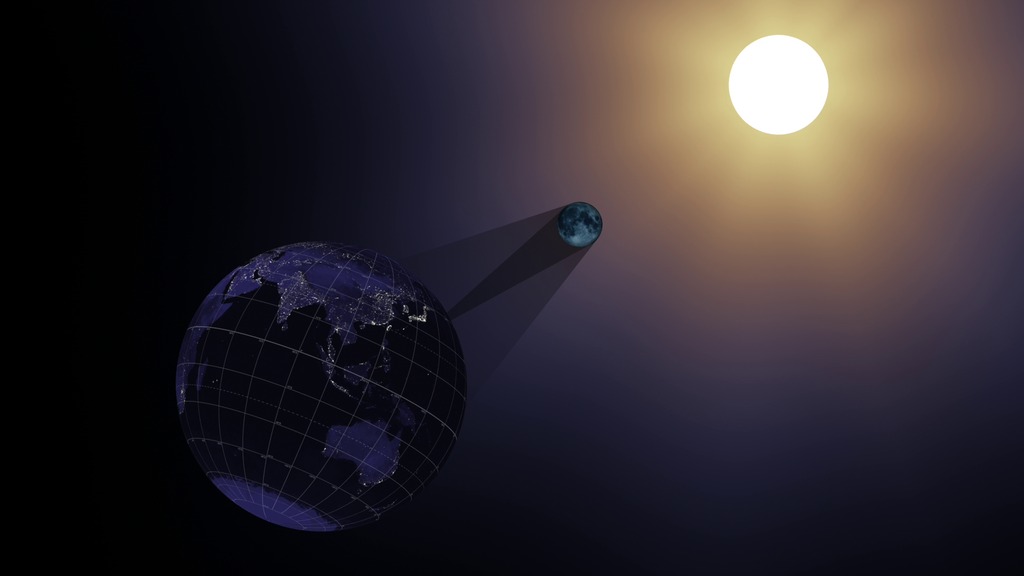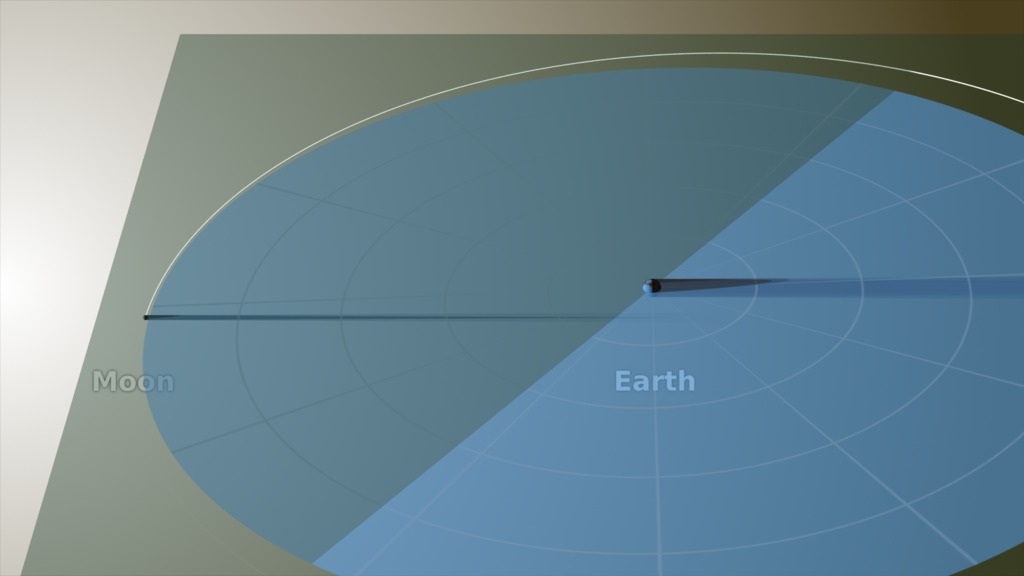2017 Eclipse Shadow Cones
The umbral and penumbral shadow cones travel across the surface of the Earth during the August 21, 2017 total solar eclipse.
A solar eclipse occurs when the Moon's shadow falls on the Earth. The shadow comprises two concentric cones called the umbra and the penumbra. Within the smaller, central umbra, the Sun is completely blocked by the Moon, and anyone inside the umbra sees a total eclipse. Within the larger penumbra, the Sun is only partially blocked.
In this animation, the umbra and penumbra cones are viewed through a telescopic lens on a virtual camera located far behind the Moon. Long focal lengths like the one used here appear to compress the distance between near and far objects. Despite appearances, the geometry of the scene is correct. The Earth is roughly 112 lunar diameters beyond the Moon, and the angle at the apex of the umbral cone is only about half a degree.
From this point of view directly behind the Moon, the edges of the shadow cones look circular. The edge of the penumbra is outlined in yellow. It passes over all of North and Central America and the Amazon basin, as well as Greenland and the North Pole. Everyone there will see at least a partial eclipse. The path of the umbra (the small black dot) crosses the United States from Oregon to South Carolina.
Credits
Please give credit for this item to:
NASA's Scientific Visualization Studio
-
Visualizer
- Ernie Wright (USRA)
-
Producer
- Genna Duberstein (USRA)
Release date
This page was originally published on Wednesday, September 9, 2015.
This page was last updated on Sunday, January 5, 2025 at 12:06 AM EST.
Series
This page can be found in the following series:Datasets used
-
BMNG (Blue Marble: Next Generation) [Terra and Aqua: MODIS]
ID: 508Credit: The Blue Marble data is courtesy of Reto Stockli (NASA/GSFC).
This dataset can be found at: http://earthobservatory.nasa.gov/Newsroom/BlueMarble/
See all pages that use this dataset -
DEM (Digital Elevation Map) [LRO: LOLA]
ID: 653 -
DE421 (JPL DE421)
ID: 752Planetary ephemerides
This dataset can be found at: http://ssd.jpl.nasa.gov/?ephemerides#planets
See all pages that use this dataset -
WAC 643nm High Sun Global Mosaic [LRO: LROC]
ID: 803
Note: While we identify the data sets used on this page, we do not store any further details, nor the data sets themselves on our site.











![Complete transcript available.Music credits: ‘Electricity Wave’ by Jean-François Berger [SACEM] and ‘Solar Winds’ by Ben Niblett [PRS], Jon Cotton [PRS]Watch this video on the NASA Goddard YouTube channel.](/vis/a010000/a012600/a012693/LARGE_MP4-12693_FirstCMEDuringEclipse_large.00139_print.jpg)